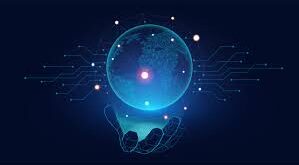Data science technical skills
Several “hard skills” that call for specialized education and training are necessary for data scientists to ask the proper questions, create strong analytical models, and analyze the results. These are the eight technical competencies that most data scientists require.
1. Statistics
It shouldn’t be shocking that data scientists need to have a solid grasp of statistics because they use statistical concepts and methods daily. Data scientists can collect, organize, maximize, analyze, interpret, and present data more effectively if they are conversant with statistical analysis, distribution curves, probability, standard deviation, variance, and other statistics-related concepts. This makes it easier for them to deal with the data and produce insightful outcomes.
2. Linear algebra and multivariable calculus
It is crucial to be able to use mathematical ideas to comprehend and maximize the fitting functions that fit a model to a collection of data. The model won’t be able to produce precise forecasts otherwise. Furthermore, data scientists ought to be proficient in the use of dimensionality reduction to streamline challenging high-dimensional data analysis tasks. In machine learning, for example, to train an artificial neural network on massive amounts of data, calculus and algebraic skills are also essential.
3. Programming and coding
Many data scientists have to learn programming to
These are the top data science skills that employers look for, according to job posting data.
5. Machine learning and deep learning
Even though they are not required to work with AI technologies, businesses are increasingly hiring data scientists to develop machine learning applications. To do this, one needs to be able to teach machine learning algorithms to learn about data sets and subsequently search for trends, abnormalities, or insights that may be utilized in the construction of analytical models. Because of this, there is an increasing need for data scientists with expertise in machine learning techniques such as supervised, unsupervised, and reinforcement learning. Proficiency in deep learning, an increasingly sophisticated technique that leverages neural networks to generate intricate analytical models, is especially advantageous for data scientists. Likewise, familiarity with many algorithmic frameworks, such as the following:
- decision trees;
- random forests;
- Naïve Bayes classifiers;
- k-nearest neighbor;
- logistic regression;
- linear regression, and
- k-means clustering.
6. Data wrangling and preparation
Data scientists frequently claim that organising and getting ready for analysis takes up more than 80% of their time while working on data science projects. Data scientists can gain by having a basic understanding of data profiling, cleansing, and modelling, even though data engineers handle the majority of the data preparation activities. This makes it possible for them to address concerns with data sets’ flaws and data quality, such as missing or incorrectly visualized labeled fields and formatting errors.
Along with gathering information from many sources and converting various data formats, data wrangling abilities also entail doing data manipulation tasks to filter, alter, and enhance data for analytics applications. Data scientists should be comfortable using common data warehouses and data lakes to support their efforts. big data platforms like Apache Spark and Hadoop, as well as relational and NoSQL database environments.
7. Model deployment and production
Most of the time, data scientists work on developing and implementing models. In supervised learning, they must be able to choose the appropriate algorithm and run it to automatically identify clusters or patterns; in unsupervised learning, they must be able to do the same. Data scientists—often in collaboration with data engineers—must implement a model in a production setting once it yields the intended outcomes in order to continuously assist their companies in making sound business decisions.
8. Data visualization
Another crucial data science ability is the ability to effectively visualise data when presenting analytics results, particularly when working with huge, multi-type big data sets. Data visualisation is a fundamental tool used by data scientists to convey their findings to stakeholders and business executives. Data scientists must be adept at using data storytelling to highlight and elucidate the insights they have produced. They should thus become proficient in using Tableau, D3.js, and any other available data visualisation tools to aid in the process. Aside from creating line, bar, and pie charts, they should also learn how to make histograms, bubble charts, heat maps, scatter plots, and other forms of data visualisations.
 Data Science in Digital Marketing Data Science in Digital Marketing: Mechanism Examples, Benefits Data Science Meets Digital Marketing Magic
Data Science in Digital Marketing Data Science in Digital Marketing: Mechanism Examples, Benefits Data Science Meets Digital Marketing Magic
